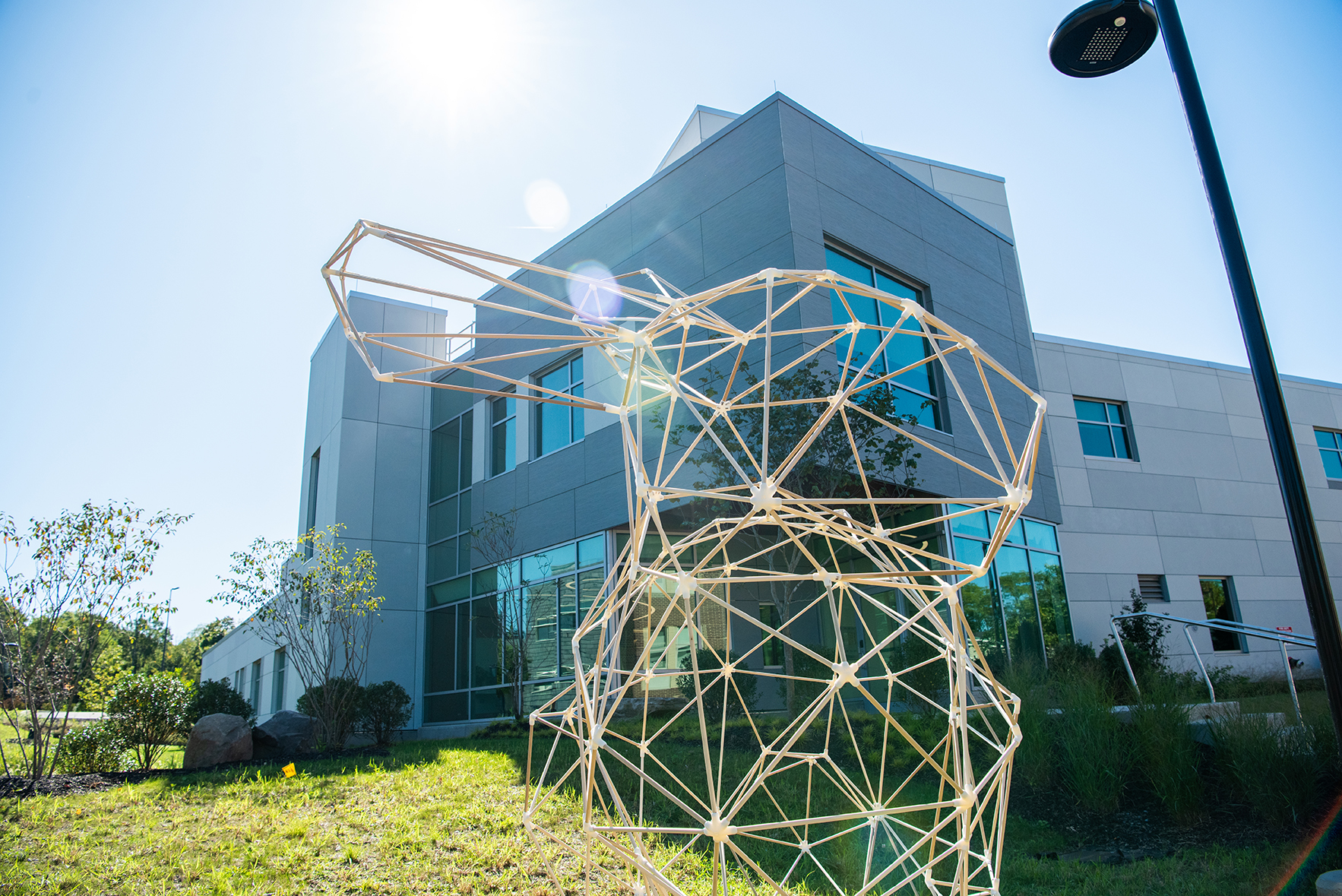
Full statement from Aaron Nelson on “Connector Series #1 – Bunny”:
The Stanford Bunny is a standard computer graphics test model developed by Greg Turk and Marc Levoy in 1994 at Stanford University and has been used to test many graphics algorithms. The original model consists of 69,451 triangles combined to make up the polygonal mesh. The original mesh was decimated or simplified into a model with fewer triangles also known as a “low-poly” model with 221 faces and 115 vertices. Each of the 115 vertices in the new low polygon count model is represented here in the object as a white plastic connector.
The Connector Series are objects generated via custom C# software written and implemented in the Rhino – Grasshopper modelling environment. Closed STL geometry feeds into the algorithm, which calculates a series of connector shapes based on a vertex and its incident edges. The edges form the “beams” which join the connectors, describing form.
The input geometry is arbitrary as long as it defines a closed space. This means that the algorithm can operate on any valid input geometry and create a custom set of connectors to build any shape at any scale as long as the means to manufacture it are available.
The connectors are printed using the Continuous Build Demonstrator in the Hudson Valley Additive Manufacturing Center. Each connector averages about 3 – 4 hours of print time for a total of over 400 hours of total printing. The ability of the Continuous Build system to produce parts 24 hours per day with little human interaction means objects of this scale can be fabricated in under 2 weeks.
Combining algorithmic 3D design along with throughput of the advanced manufacturing equipment housed within the HVAMC allows designers the freedom to quickly iterate and explore idea and form. As the form finding process becomes more intertwined with the use and application of technology, we must begin to recognize that the computer and design software is less a tool, but has emerged as a silent non-human collaborator in the inquiry of the spaces that lie between Art, Technology, Design, and Science.

